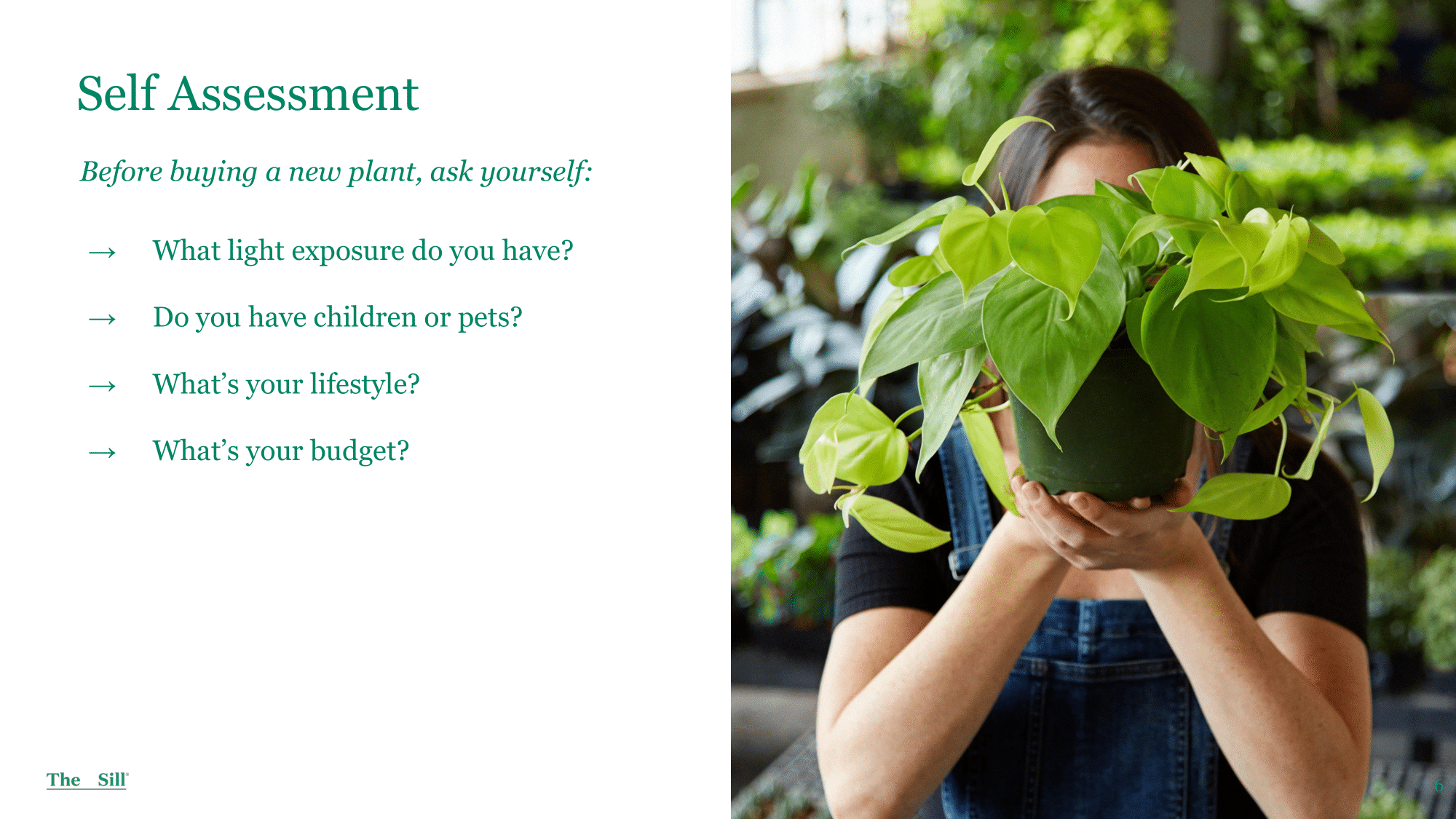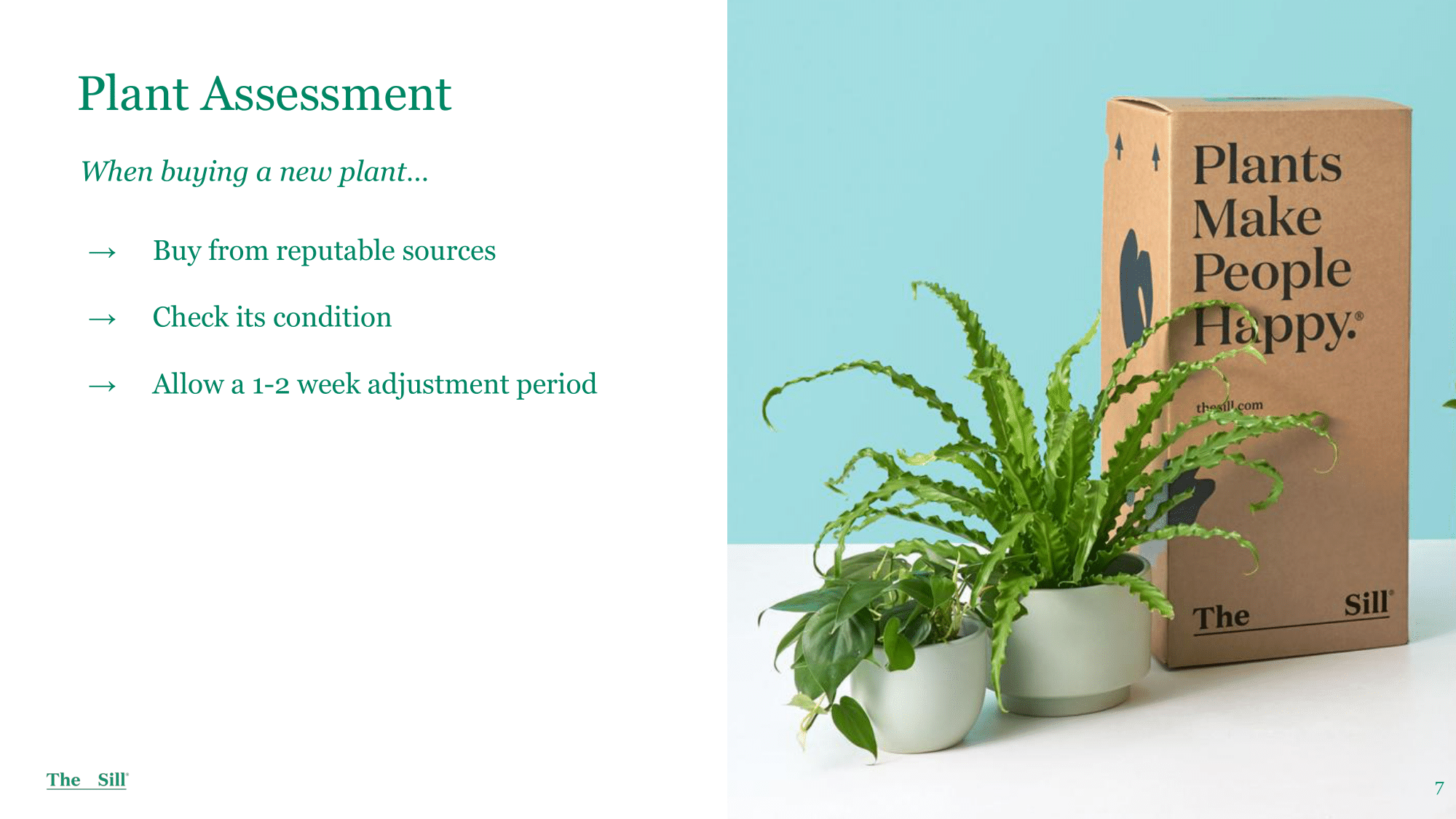Getting Started
Part 1 of 6

Self Assessment
- Exposure: Understand what kind of light you have can better help you decide on the best plant picks for your space! (discussed in next topic)
- Pets/Children: Plants all have their own toxicity rating, so it’s best to understand how your pets/children will interact with these plants & if you should keep toxic plants out of reach or only include non-toxic into the home. Plants are only toxic upon consumption, not from touching or smelling plants. Plant parents can refer to ASPCA website to look up what plants are toxic vs non-toxic. They can utilize things like ceiling/wall planters, and plant stands to keep plants out of reach if they are toxic.
- Lifestyle: Some plants can be low or high maintenance, and understanding your capabilities & a plants needs can help you find the one best matched for your lifestyle. Low maintenance plants include ZZ, Snake Plants, Succulents, cacti, etc. High maintenance would include Calatheas, Ferns, Fittonias, basically anything that requires more frequent waterings and even high humidity.
- Budget: Understanding the cost of materials in general overtime. When bringing a new plant home you’ll need to consider purchasing fresh soil, a fresh planter, and any other accessories like fertilizer, pest treatment, moisture meter, pruners, etc. All of this needs to be considered into a budget for each individual plant!

Plant Assessment
- Reputable sources: Choosing the best sources for plants ensure that you receive the most healthy, pest/disease free plant (we source locally)!
- Condition: For in-shop plant shopping check all parts of plants to ensure you’re bringing home a healthy plant, with established roots, that are pest/disease free. For online shopping, unpack plant in quarantined area and undergo the same inspection before assimilating into the rest of your collection. Regardless of seeing physical signs of pests/diseases, recommend to still treat any new plants upon arrival. (Consider treating with neem oil as a protective measure / in case pests are hidden)
- Acclimation: Plants should be allowed to acclimate into their new home for at least 1-2 weeks before repotting to help prevent transplant shock. (If plants happen to have space to continue growing in grow pot they can feel free to let them continue growing in it until it becomes pot bound, but suggest freshing some of the soil or applying fertilizer to make sure essential nutrients are still present.
Topics
- 1. Getting Started
- 2. Light
- 3. Environment
- 4. Watering
- 5. Potting & Drainage
- 6. Soil Mixes
